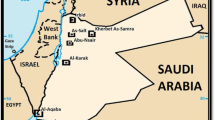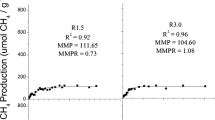Abstract
The graphite electrode sludge was sampled from a huge chloralkali plant in central China. The total level of PCDD/F was found as high as 378.85 μg/kg sludge (dry weight). The patterns of PCDD/F in each homologue indicated the predominance of tetra-to octa-chlorinated PCDFs. Furthermore, the toxic 2,3,7,8-substituted PCDFs constituted over 80% of the total PCDFs in the sludge and the corresponding PCDDs were only at 15 μg/kg level. The calculated value of the international toxic equivalence (I-TEQ) in sludge was 21.65 μg/kg sludge (dry weight). This typical “dioxin chloralkali pattern” was apparently identified in the sediments near the effluent outlet of the chloralkali plant.
Similar content being viewed by others
References
Manninen, H., Perkio, A., Varliainen, T. et al., Formation of PCDD/PCDF, Environ. Sci. & Pullut. Res., 1996, 3(3): 129.
Elena, F., Emilio, B., Giulio, M. et al., Patterns and sources of polychlorinated dibenzo-p-dioxins and dibenzofurans in sediments from the Venice Lagoon, Italy, Environ. Sci. Technol., 1997, 31: 1777.
Zhu, S. K., General situation of national chloralkali production and technical development in 1998, Chinese Chloralkali (in Chinese), 1999(5): 23.
Xiao, W. G., Ni, Z. S., The combination advantages of chloralkali chemical industry and petroleum chemical industry, Chinese Chloralkali (in Chinese). 1999(4): 3.
Bernadine, A. B., Polychlorinated dibenzo-p-dioxin und dibenzofuran concentration profiles in sediment and fish tissue of the Willamette Basin. Oregon, Environ. Sci. Technol., 1998, 32: 729.
Wu, W. Z., Xu, Y., Zhang, Q. H. et al., Cleanup and quantification of polychlorinated dibenzo-p-dioxins/furans and polychlorinated biphenyls. Progress in Natural Science (in Chinese), 1998, 8(4): 431.
Manninen, H., Perkio, A., Vartiainen, T. et al. Formation of PCDD/PCDF, Environ. Sci. Pollut. Res., 1996, 3(3): 129.
Svensson, B. G., Barregard, L., Sallsten, G. et al., Exposure to polychlorinated dioxins (PCDD) and dibenzofurans (PCDF) from graphite electrodes in a chloralkali plant, Chemosphere, 1993, 27: 259.
Rappe, C., Kjeller, L.-O., Kulp, S.-E., Levels, profile and pattern of PCDDs and PCDFs in samples related to the production and use of chlorine. Chemosphere, 1991, 23: 1629.
Erik, H. G. E., Hans, J. C. K., Remiw, P. M. L. et al., Polychlorinated dibenzo-p-dioxin and dibenzofuran residues in estuarine and coastal north sea sediments: sources and distribution, Environ. Toxicol. Chem., 1993, 12: 1583.
Robie, W. M., Michael, G. I., David, W. P., Historical input of PCDDs. PCDFs, and PCBs to a British Columia interior lake: The effect of environmental controls on pulp mill emissions. Environ. Sci. Technol., 1998, 32: 331.
Brzuzy, L. P., Hites, R. A., Estimating the atmospheric deposition of polychlorinated dibenzo-p-dioxins and dibenzofurans from soils, Environ. Sci. Technol., 1995, 29: 2090.
Kjeller, L.-O., Jones, K. C., Johnston, A. E. et al., Evidence for a decline in atmospheric emissions of PCDD/Fs in the U.K., Environ. Sci. Technol., 1996, 30: 1398.
Author information
Authors and Affiliations
Corresponding author
About this article
Cite this article
Xu, Y., Zhang, Q., Wu, W. et al. Patterns and levels of PCDD/F in a Chinese graphite electrode sludge. Chin.Sci.Bull. 45, 1471–1476 (2000). https://doi.org/10.1007/BF02898890
Received:
Issue Date:
DOI: https://doi.org/10.1007/BF02898890




